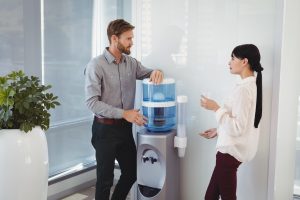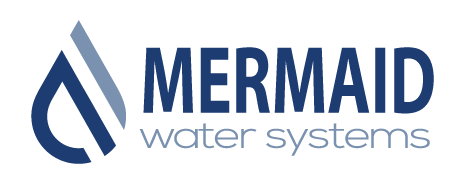What Equipment Do You Need To Purify Water At Home? A Comprehensive Guide
 Clean drinking water is a human right and necessity, and yet many people still lack access to clean water. Purifying water at home is a great way to ensure that you and your family are drinking clean, safe water. It can be an intimidating process, however, since there is a lot of specialised equipment and methods needed for effective water purification. This comprehensive guide will explain all the equipment necessary for purifying water at home, from filters to chemical purification systems to UV sterilization. With this guide, you can make sure that you have the equipment necessary to produce safe and drinkable water for your home.
Clean drinking water is a human right and necessity, and yet many people still lack access to clean water. Purifying water at home is a great way to ensure that you and your family are drinking clean, safe water. It can be an intimidating process, however, since there is a lot of specialised equipment and methods needed for effective water purification. This comprehensive guide will explain all the equipment necessary for purifying water at home, from filters to chemical purification systems to UV sterilization. With this guide, you can make sure that you have the equipment necessary to produce safe and drinkable water for your home.
What is Water Purification?
The process of water purification is meant to make water cleaner and safer for human consumption. In many cases, water can pose a health risk to consumers due to the presence of bacteria, contaminants, and other impurities. The process of water purification removes these impurities and leaves behind clean water that can be safely consumed. There are various types of water purification processes that can be used for different types of water contamination. For example, water that is contaminated with harmful bacteria can be treated using a process called bacteria purification. Water that is contaminated with chemicals and minerals can use a chemical purification process, and water that is affected by viral impurities can use a process called viral purification.
Overview of Water Purification Equipment
There are many types of water purification equipment that can be used to treat different types of water contaminants. Water filters remove unwanted minerals, bacteria, and other particulates from the water. Chemical purification systems can be used to break down and remove harmful chemicals and minerals. UV sterilization equipment uses ultraviolet light to kill any virus impurities in water. Disinfectants are used to kill any bacteria impurities in water and are usually part of a chemical purification system or a water filter. All of these types of equipment are necessary when trying to purify water.
Water Filters
A water filter is one of the most common water purification tools. A water filter is a device that is meant to remove impurities from water through a physical process. There are many water filter types that are effective for different contamination types. For example, a carbon filter can be used to remove bacteria from water, while a sediment filter is meant to remove impurities like dirt and sand. A reverse osmosis filter is meant to remove minerals from water, and a distillation filter can be used to remove bacteria and chemicals from water. Depending on the type of water contamination, there are many different types of water filters that can be used to purify water.
Chemical Purification Systems
A chemical purification system uses chemical impurities to purify water. These water purification systems are effective against chemical impurities in water, but they cannot be used to treat bacteria or viral impurities. Common chemical impurities found in water are minerals and certain chemical impurities like chlorine. A chemical purification system can be used to remove these chemical impurities from water and leave you with clean water. Depending on the chemical purification system, it can break down the chemical impurities in water, leaving you with clean water.
Ultraviolet Sterilization
Ultraviolet (UV) sterilization is a type of water purification that uses ultraviolet light to kill viral impurities in water. UV sterilization is often used in conjunction with other water purification methods. UV sterilization is effective on water that has low mineral content, since high mineral content can block the light from the UV sterilization equipment. UV sterilization is used to purify water that is affected by viral impurities like human or animal pathogens like bacteria, viruses, and parasites. UV sterilization is a good choice for water that has low mineral content since it is a chemical-free water purification method. UV sterilization is effective against many different types of viruses, including the ones that cause stomach flu, yellow fever, dengue fever, and hepatitis.
Disinfectants
Disinfectants are chemical impurities that are added to water to kill any bacteria or impurities in water. Disinfectants are usually part of a chemical purification system. Disinfectants are often used in the agricultural or medical industries, but they can also be used to purify water. Disinfectants are effective against bacteria and certain viruses and are a good additional purification method when used in conjunction with other equipment. Disinfectants are effective against a wide variety of harmful bacteria and can be used on both heavily contaminated water and lightly contaminated water.
Water Purification Maintenance
Water purification equipment needs to be maintained to ensure that it is working properly and effectively. If a water purification system is not maintained, it can become less effective or stop working all together. Maintenance can include cleaning, replacing parts of the equipment, and adding chemicals or new water. Cleaning water purification equipment is essential to maintaining it. Water filters, chemical purification systems, and UV sterilization equipment should be cleaned to remove impurities and bacteria that have built up in the equipment.
Conclusion
Clean drinking water is a human right, but many people still lack access to clean water. Water purification is a great way to ensure that you and your family are drinking clean, safe water. This guide has explained all the equipment necessary for purifying water at home, from filters to chemical purification systems to UV sterilization. With this guide, you can make sure that you have the equipment necessary to produce safe and drinkable water for your home.
